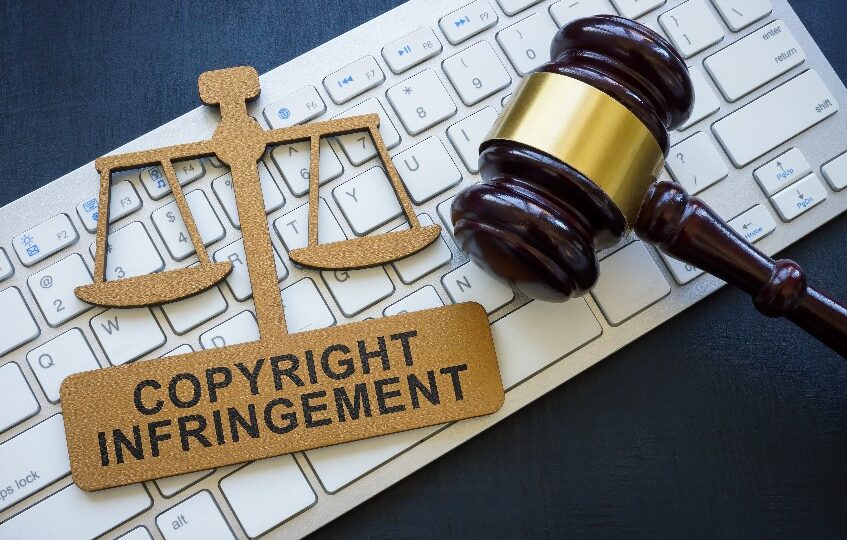In the ever-evolving landscape of content creation, navigating copyright issues has become a paramount concern for writers, journalists, researchers, and content creators at large. This article aims to delve into the complexities of copyright issues and explore the multifaceted world of paraphrasing as a solution. We’ll not only cover the basics but also provide in-depth insights, case studies, and expert opinions to guide you through the intricate maze of copyright compliance.
Understanding Copyright Issues
To comprehend the significance of paraphrasing, one must first grasp the fundamentals of copyright laws. We’ll explore the intricacies of these laws, examining various infringement scenarios, including literal reproduction, unauthorized adaptation, and the creation of derivative works. By understanding these scenarios, content creators can better navigate the fine line between inspiration and infringement.
Paraphrasing as a Solution
Paraphrasing, often hailed as the art of linguistic transformation, serves as a potent solution to copyright dilemmas. But what exactly is paraphrasing, and how does it fit into the legal framework? We’ll define paraphrasing, explore its purpose, and clarify its legality. Through this, content creators can harness the power of paraphrasing while staying firmly within the bounds of the law.
Best Practices for Effective Paraphrasing
Paraphrasing is not merely a mechanical task but an art that demands skill and finesse. We’ll delve into best practices, exploring how changing sentence structures, employing synonym replacement, and maintaining the original meaning contribute to effective paraphrasing. By mastering these techniques, content creators can elevate their work while safeguarding against infringement.
Tools and Techniques for Paraphrasing
The digital era offers a plethora of tools and techniques for paraphrasing. We’ll dissect online paraphrasing tools, manual techniques, and the integration of plagiarism checkers. This section provides a comprehensive guide for creators seeking both convenience and reliability in their paraphrasing endeavors.
Legal Implications of Inadequate Paraphrasing
Inadequate paraphrasing can have serious consequences, ranging from lawsuits to financial penalties. We’ll explore recent copyright infringement cases, shedding light on the real-world implications of insufficient paraphrasing. By understanding these legal nuances, content creators can fortify their defenses against potential litigation.
Benefits of Properly Paraphrased Content
Proper paraphrasing not only safeguards against legal risks but also brings forth a myriad of benefits. We’ll discuss how paraphrasing enhances originality, prevents plagiarism accusations, and contributes to the gradual building of credibility for content creators.
Challenges in Paraphrasing
While the benefits are substantial, challenges persist in the world of paraphrasing. Balancing originality with faithfulness to the source material and avoiding unintentional plagiarism require a delicate touch. Content creators must navigate these challenges to ensure their work remains both unique and respectful of intellectual property.
Educational and Professional Guidelines
Institutions and corporations play a pivotal role in shaping guidelines for paraphrasing. We’ll explore the policies of academic institutions and corporate entities, emphasizing the importance of education and training in fostering responsible paraphrasing practices.
Real-world Examples of Successful Paraphrasing
The proof of the pudding is in the eating. We’ll examine real-world examples of successful paraphrasing in various domains, including media, journalism, and academic research. These case studies provide tangible insights into the practical application of paraphrasing strategies.
Future Trends in Copyright and Paraphrasing
The world of copyright is dynamic, with laws constantly evolving. We’ll discuss the anticipated trends in copyright laws and the parallel advancements in paraphrasing technology. Staying abreast of these changes is imperative for creators seeking to navigate the evolving landscape responsibly.
Expert Opinions on Copyright and Paraphrasing
What do legal experts and seasoned content creators have to say about copyright and paraphrasing? Through interviews and insights, we’ll gain a deeper understanding of the perspectives that shape the discourse surrounding intellectual property and content creation.
Addressing Common Misconceptions
Misconceptions abound in the realm of paraphrasing. We’ll debunk myths and clarify legal grey areas, empowering content creators to navigate this space with clarity and confidence.
Case Studies on Copyright and Paraphrasing
Delving into notable copyright disputes, we’ll analyze the impact of paraphrasing in legal resolutions. These case studies offer valuable lessons for content creators navigating potential legal challenges.
The Role of AI in Paraphrasing and Copyright
As artificial intelligence continues to advance, we’ll explore the role of AI in paraphrasing. From AI-powered paraphrasing tools to ethical considerations and limitations, this section provides a glimpse into the future of content creation.
International Perspectives on Copyright and Paraphrasing
Copyright laws vary globally, presenting challenges for creators who operate across borders. We’ll examine the variances in copyright laws, exploring the complexities of cross-border collaboration and the challenges therein.
Educational Initiatives for Responsible Paraphrasing
The journey toward responsible paraphrasing begins with education. We’ll explore how educational institutions are integrating paraphrasing into curricula and offering workshops and training programs to instill responsible practices in future content creators.
Balancing Creativity and Compliance in Content Creation
Striking a balance between creativity and compliance is an ongoing challenge. We’ll discuss strategies for fostering creativity within copyright boundaries, backed by case studies showcasing successful synergy between creativity and compliance.
The Psychology of Paraphrasing: Cognitive Processes Involved
What goes on in a writer’s mind during the paraphrasing process? We’ll delve into cognitive science perspectives, unraveling the mental processes involved in paraphrasing and how writers approach this task.
Conclusion
In conclusion, navigating copyright issues with paraphrasing solutions requires not just knowledge but a nuanced and adaptive approach. By understanding the legal landscape, mastering best practices, and embracing emerging trends, content creators can successfully navigate the delicate balance between creativity and compliance.
Frequently Asked Questions (FAQs)
Q: What is the role of AI in paraphrasing, and is it legally sound?
A: AI plays a significant role in paraphrasing, but the legality depends on various factors, including the source of the AI tool and its application. Users must exercise caution and be aware of potential legal implications.
Q: How do cultural differences impact paraphrasing approaches globally?
A: Cultural nuances can influence how content is paraphrased. Understanding these differences is crucial for creators working on a global scale, as interpretations of originality may vary.
Q: Are there specific industries where paraphrasing is more prevalent?
A: Paraphrasing is prevalent across various industries, but it may be more pronounced in fields where the reuse of information is common, such as journalism, academia, and marketing.
Q: Can paraphrasing be considered a form of artistic expression?
A: Paraphrasing involves a creative reinterpretation of content, and some argue that it can indeed be a form of artistic expression. However, legal interpretations may vary.
Q: How can educational institutions better support responsible paraphrasing?
A: Educational institutions can support responsible paraphrasing by integrating it into curricula, offering workshops on proper citation and paraphrasing techniques, and emphasizing the importance of academic integrity.








